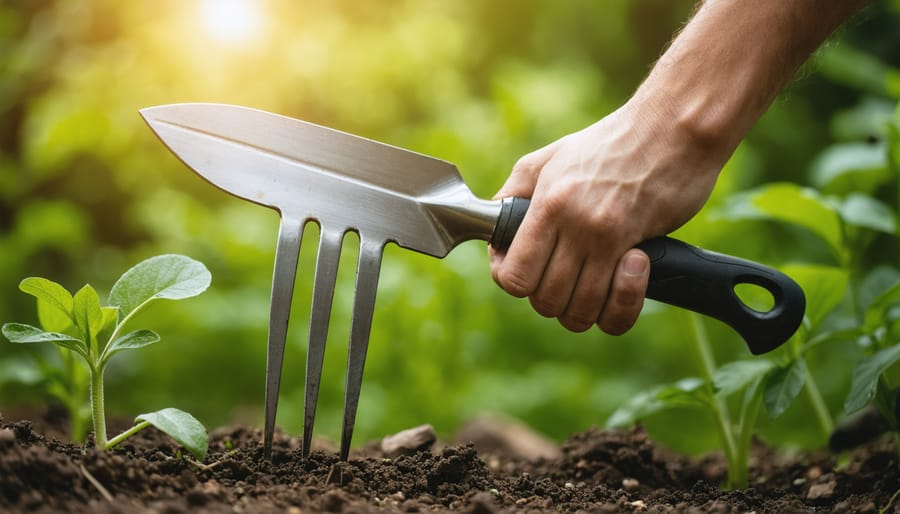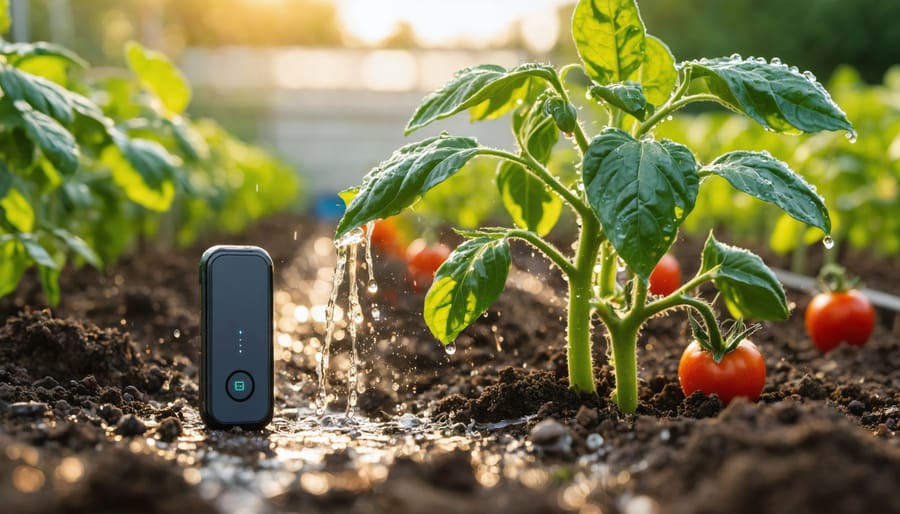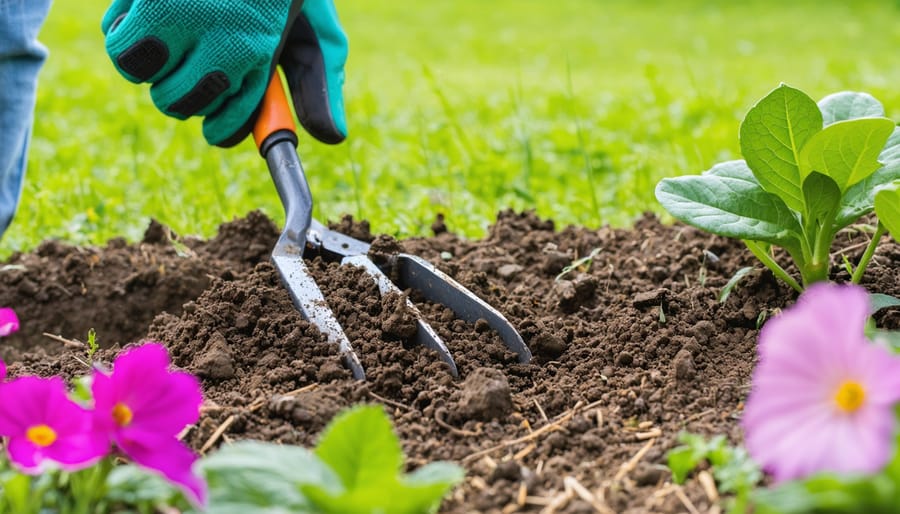Transform your backyard into a thriving garden with just six essential tools: a sturdy hand trowel, mid-length pruning shears, a well-balanced spade, a steel rake, comfortable gardening gloves, and a reliable watering can. These fundamental implements form the backbone of every successful gardening journey, whether you’re planting your first herbs or launching a full vegetable garden.
Start small and invest in quality – a single well-crafted trowel will outlast dozens of cheaper alternatives and make daily gardening tasks more enjoyable. Professional gardeners consistently rank these six tools as their most-used items, proving you don’t need an extensive collection to grow successfully.
Store your tools in a dry, accessible location, clean them after each use, and maintain their edges – these simple habits will protect your investment and ensure your gardening experience remains rewarding. With these trusted companions by your side, you’re fully equipped to begin your gardening adventure with confidence.
Must-Have Hand Tools for New Gardeners
The Foundation: Trowel and Hand Fork
Every successful gardening journey begins with two fundamental tools: the hand trowel and hand fork. These versatile implements will become your constant companions in the garden, handling everything from planting to weeding.
Choosing the right trowel is crucial, as it’s essentially an extension of your hand. Look for one with a comfortable grip and sturdy construction – stainless steel is ideal for its durability and rust resistance. Your trowel will help you dig planting holes, transfer seedlings, and mix soil with ease.
The hand fork, often called a cultivator, is equally important. With its short, sturdy tines, it’s perfect for loosening soil, removing weeds, and breaking up compacted earth around existing plants. When working with the hand fork, use gentle raking motions to avoid damaging plant roots.
These tools work beautifully together – use the fork to loosen soil, then the trowel to create precise holes or remove unwanted plants. For best results, keep them clean after each use and store them in a dry place. With proper care, these foundational tools will serve you well for many growing seasons to come.
Pruners and Garden Shears
When it comes to keeping your garden neat and healthy, having the right cutting tools is essential. Hand pruners (also called secateurs) are perfect for cutting stems and small branches up to ½ inch thick. Look for bypass pruners for clean cuts on live plants, while anvil pruners work better for dead wood and tough stems.
For larger branches up to 2 inches in diameter, loppers are your go-to tool. Their long handles provide extra leverage and reach, making it easier to trim high branches or access tight spaces. Garden shears, with their long, straight blades, are ideal for edging and trimming grass, as well as shaping hedges and bushes.
Keep your cutting tools sharp and clean for the best results. After each use, wipe the blades with a cloth and occasionally apply light oil to prevent rust. This maintenance not only extends their life but also ensures clean cuts that help your plants heal quickly and stay healthy.
Hand Cultivator and Weeder
A hand cultivator and weeder are two essential tools that will become your constant companions in the garden. The hand cultivator, with its three or four curved tines, helps loosen soil, break up clumps, and create the perfect environment for your plants to thrive. It’s particularly useful when preparing soil for planting and maintaining healthy soil throughout the growing season.
The weeder, often featuring a forked tip or curved blade, makes quick work of unwanted plants without disturbing your garden favorites. Look for tools with comfortable, ergonomic handles that won’t strain your wrists during extended use. Stainless steel heads resist rust and maintain their sharp edges longer than other materials.
Keep these tools clean and dry after each use, and they’ll serve you well for years to come. Many gardeners find it helpful to have both tools within easy reach while working, as they’re perfect for quick maintenance tasks and keeping your garden beds in top condition.
Long-Handled Tools Worth the Investment
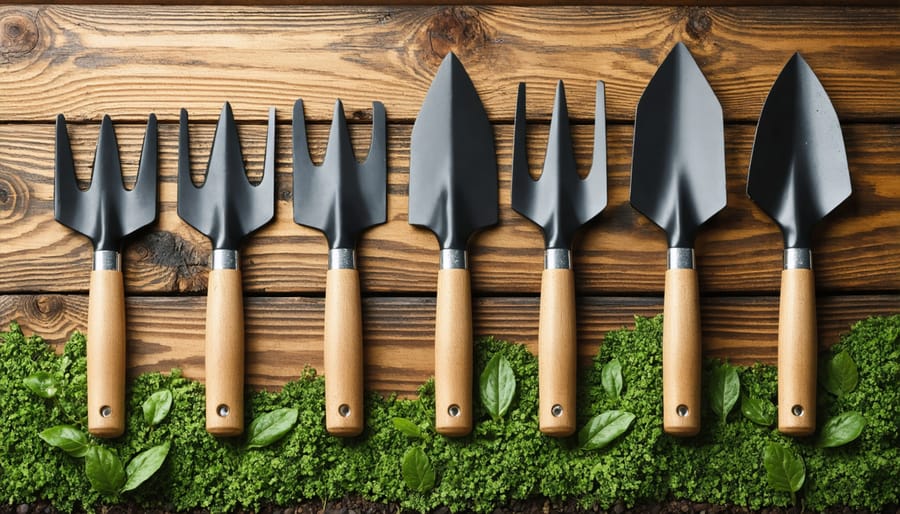
Spade vs. Shovel: What You Really Need
Many new gardeners wonder about the difference between a spade and a shovel, and for good reason – they look quite similar! However, each tool has its specific strengths that make it invaluable in the garden.
A spade features a flat, straight blade with a square edge, making it perfect for edging beds, cutting through roots, and creating clean lines in your garden. Think of it as your garden’s precision tool. Its design allows you to dig straight down and create neat edges, which is especially helpful when installing borders or dividing perennials.
On the other hand, a shovel has a curved, pointed blade that’s ideal for scooping and moving materials like soil, mulch, or gravel. The curved design helps you lift and throw material with less strain on your back. It’s your go-to tool for general digging, particularly when you need to move larger amounts of material.
For beginning gardeners, I typically recommend starting with a round-point shovel, as it’s more versatile for general garden tasks. However, if you’re planning to create formal beds or do detailed edging work, a spade will quickly become your best friend. Many experienced gardeners eventually own both, as they complement each other perfectly in a well-rounded tool collection.
Garden Rake and Hoe Basics
Garden rakes and hoes are true workhorses in any gardener’s toolkit, helping you create the perfect growing environment for your plants. A garden rake, with its sturdy metal tines, is essential for leveling soil, removing rocks and debris, and spreading mulch evenly across your garden beds. Think of it as your garden’s own grooming tool, helping you maintain a tidy and organized space.
The hoe, on the other hand, is your go-to tool for soil preparation and weed control. Its flat blade makes quick work of breaking up soil clumps, creating furrows for planting, and eliminating pesky weeds before they take over your garden. The long handle on both tools allows you to work while standing, saving your back from strain and making gardening more enjoyable.
When choosing these tools, look for models with sturdy wooden or fiberglass handles and rust-resistant metal heads. For beginners, a standard bow rake and a draw hoe are perfect starting points. Keep them clean after each use and store them in a dry place to prevent rust. With proper care, these versatile tools will serve you well for many growing seasons to come, making them worthy investments for any new gardener.
Watering Equipment for Success
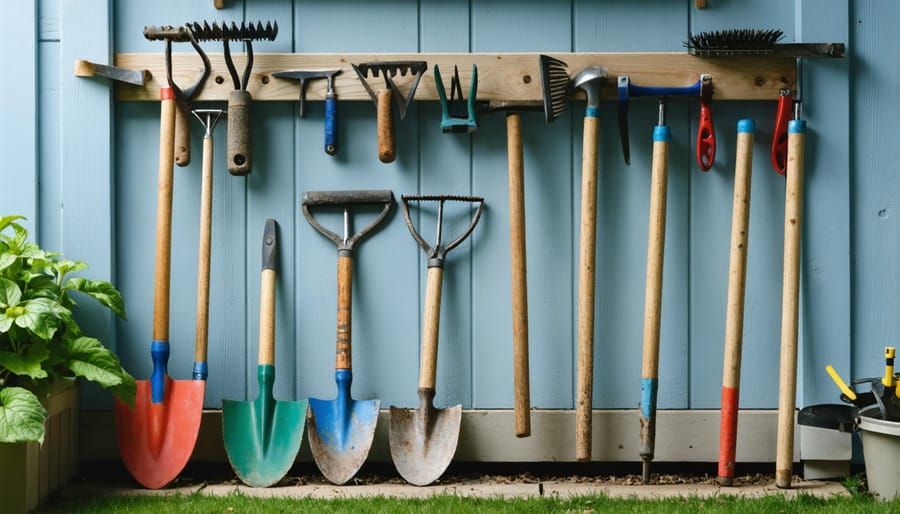
Watering Can vs. Garden Hose
Both watering cans and garden hoses have their place in your gardening toolkit, and understanding their unique benefits will help you choose the right tool for each task. Watering cans offer precise control, making them perfect for delicate seedlings, container plants, and indoor gardening. They also help you develop a closer connection with your plants as you observe their individual needs.
Garden hoses, along with various garden hose accessories, are ideal for larger areas and established plants. They save time and effort when watering extensive garden beds or lawns. While hoses provide convenience, they can sometimes deliver water with too much force for tender plants.
For beginners, I recommend starting with both tools. A 2-gallon watering can with a removable rose (the sprinkler head) offers versatility for small-scale watering. Pair this with a medium-duty garden hose for larger tasks. Remember to choose a hose length appropriate for your garden size, and always store both tools properly to prevent kinks and extend their lifespan.
Basic Irrigation Accessories
Proper watering is crucial for a thriving garden, and having the right irrigation accessories makes this task much easier. A quality watering can with a removable rose head is essential for gentle watering of delicate seedlings and container plants. Look for one with a 1-2 gallon capacity and a comfortable handle for easy carrying.
A basic garden hose with an adjustable nozzle is another must-have. Choose a medium-duty hose that’s kink-resistant and long enough to reach all areas of your garden. The nozzle should have multiple spray patterns, from a fine mist to a strong jet, to accommodate different watering needs.
For consistent watering, consider a simple soaker hose or a basic drip irrigation kit. These systems deliver water directly to plant roots, reducing water waste and helping prevent leaf diseases. Timer attachments can automate your watering schedule, ensuring your plants get consistent moisture even when you’re away.
Don’t forget to include a few quick-connect hose attachments – they make switching between watering tools much more convenient and help prevent leaks at connection points.
Protection and Comfort Essentials
Gloves and Knee Protection
Protecting your hands and knees is essential for comfortable and safe gardening. For your hands, invest in two types of gloves: lightweight cotton-blend gloves for general tasks like planting and weeding, and sturdy waterproof gloves for working with wet soil or thorny plants. Make sure your gloves fit snugly but allow enough flexibility to grip tools comfortably.
For knee protection, foam kneeling pads or dedicated gardening knee pads are invaluable, especially during extended periods of weeding or planting. If you prefer more mobility, consider a portable gardening seat that can double as a kneeler when flipped over. These typically include handles to help you stand up, making them perfect for gardeners of all ages.
Remember to clean your protective gear after use and store it in a dry place to extend its lifespan. Having the right protection will make gardening more enjoyable and help prevent unnecessary aches and strains.
Tool Storage Solutions
Proper storage is key to maintaining your gardening tools and extending their lifespan. A simple pegboard mounted in your garage or shed keeps tools visible and easily accessible. For smaller spaces, a repurposed bucket with a tool organizer insert works wonders for hand tools. Store long-handled tools like rakes and shovels upright in a corner using a PVC pipe rack or dedicated tool holder. Keep tools clean and dry before storing, and consider applying a light coat of mineral oil to metal parts to prevent rust. A basic tool caddy or garden tote makes it easy to carry essentials around the garden. For those without a shed, a weather-resistant storage bench serves double duty as seating and storage space, keeping your tools protected from the elements.
Starting your gardening journey doesn’t have to be complicated or overwhelming. With just a few essential tools – a trowel, pruning shears, watering can, garden gloves, and a sturdy spade – you’ll be well-equipped to tackle most basic gardening tasks. Remember, quality matters more than quantity when it comes to gardening tools, so invest in durable items that feel comfortable in your hands. As you gain experience and expand your garden, you can gradually add more specialized tools to your collection. The most important thing is to get started – your garden doesn’t need to be perfect from day one. With these basic tools and a willingness to learn, you’re ready to create your own green paradise. Happy gardening, and don’t forget to enjoy the process of watching your garden grow!

